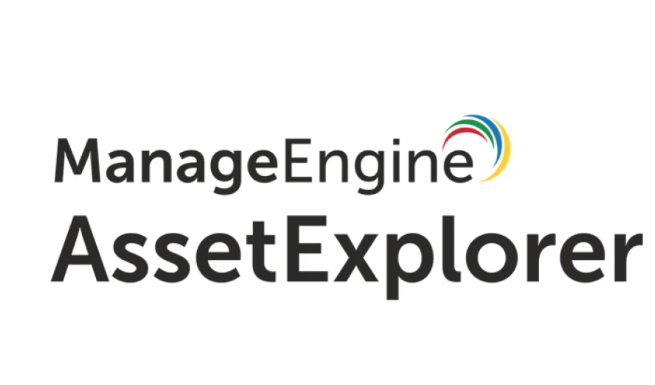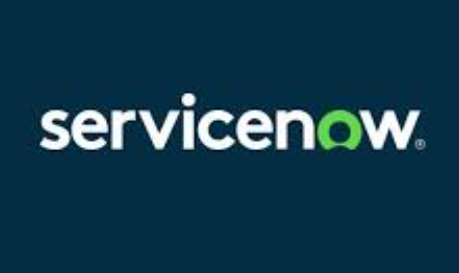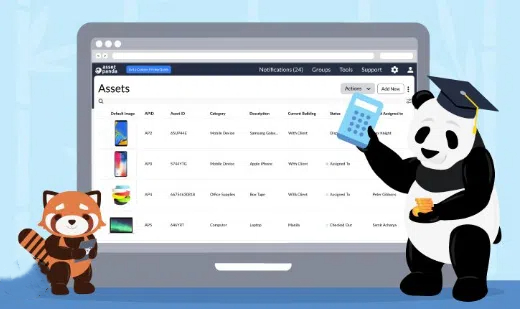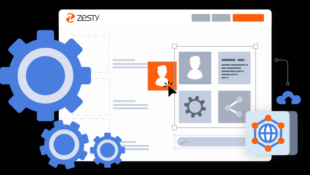What is Cloud-based IT Asset Management? (Definition, Benefits, and Best Tools)
With the rapid growth of technology, businesses are increasingly turning to cloud-based solutions for their operations. One major area of this shift is in IT asset management, where cloud-based software allows companies to track and manage their IT assets online from any location. According to recent studies, the market for cloud-based IT asset management is growing significantly, as more companies recognize its benefits like cost savings, improved efficiency, and easier access to data.
This article will explain what cloud-based IT asset management is, explore its key benefits, and discuss the industries that are adopting it. We’ll also highlight some of the best tools available to help businesses manage their IT assets effectively in the cloud.

1What is Cloud-based IT Asset Management?
Cloud-based IT Asset Management involves using online platforms to oversee an organization’s IT assets, such as hardware, software, and digital tools. Unlike traditional systems that require physical servers and in-house maintenance, cloud-based ITAM operates entirely through the internet, allowing companies to manage their assets from anywhere, anytime, on any device.
These cloud-based systems are designed to track every stage of an asset’s lifecycle—from purchase and deployment to maintenance and eventual disposal. By offering real-time tracking, automated updates, and a centralized management dashboard, cloud-based ITAM not only streamlines the management process but also enhances overall operational efficiency. As more companies seek flexible and scalable solutions, the adoption of cloud-based ITAM is becoming a crucial strategy for modern businesses.
2Benefits of Cloud-based IT Asset Management
Improved efficiency:
Centralized asset management and optimized procedures minimize manual errors and reduce data search time. Real-time tracking and monitoring enables aggressive maintenance, reduces asset downtime and increases productivity. Automate routine tasks such as scheduling maintenance and reporting to turn staff time to more strategic work.
Cost savings:
Real-time tracking enables optimal use of assets to prevent unnecessary purchases and rentals. Proactive maintenance based on reliable data prevents failure and extends the life of assets. Reduce management costs by reducing clerical processing, physical storage and manual recording management.
Better decision-making:
Thorough access to asset data enables you to make informed choices about improvement, replacement and repair. Practical insights to help allocate resources and improve planning are provided through real-time analysis and customizable reports. By analyzing past data, you can easily discover areas where trends, patterns and process optimization may be improved.
Enhanced security and compliance:
Cloud-based storage ensures data security, backup and disaster recovery. Audit trail and access control enable accountability and traceability. Easy compliance with industry rules such as asset monitoring obligations and maintenance documents.
3 Industries Best Suited for Cloud-Based IT Asset Management
Here are the industries best suited for Cloud-Based IT Asset management:
1Technology and IT Services
For technology and IT services companies, managing a large number of assets across numerous locations can be challenging. Cloud-based ITAM solutions offer these companies the ability to track hardware and software assets, manage licenses, and ensure compliance with ease.
2Healthcare
Healthcare organizations require precise tracking of medical equipment and IT assets to ensure patient safety and regulatory compliance. Cloud-based ITAM provides real-time visibility into asset status, maintenance schedules, and compliance documentation, which is critical for healthcare providers.
3Education
Educational institutions often have extensive networks of IT assets, including computers, tablets, and educational software. Cloud-based ITAM solutions help schools and universities manage these assets efficiently, track usage, and ensure that resources are utilized effectively.
4Retail
In the retail industry, managing IT assets across multiple stores and warehouses can be complex. Cloud-based ITAM helps retailers track inventory, manage point-of-sale systems, and optimize IT infrastructure to enhance operational efficiency.
4Best Cloud-based IT Asset Management Software
1ManageEngine AssetExplorer
ManageEngine AssetExplorer is a comprehensive IT asset management software tool designed to oversee and manage assets throughout the lifecycle, from planning to disposal.
AssetExplorer provides multiple means to thoroughly discover assets within your organization, ensuring that no assets are missed. User-friendly installations and easy-to-understand interfaces enable organizations to manage software and hardware assets throughout their lifecycle efficiently. ManageEngine AssetExplorer makes it easy to record software licenses, review software license compliance, and track purchases and contracts.

Features
- End-to-end IT asset lifecycle management from initial planning to responsible disposal.
- Support inventory tracking, financial planning, and decision-making to understand the total value of IT assets at any time.
- Manage distribution, ensure compliance with policies, and ensure compliance with software licenses by meeting contract and regulatory requirements.
- Make informed decisions about hardware and software acquisition throughout the IT lifecycle to optimize resource allocation and cost-effectiveness.
Pros
- Comprehensive asset tracking across hardware and software assets.
- User-friendly interface, easy for IT teams to adopt and use.
- Strong reporting capabilities with customizable reports and dashboards.
Cons
- Limited customization options for specific business needs.
- It can be expensive for small businesses or startups.
- Lacks advanced integration features with non-ManageEngine tools.
Pricing: Starts at $795 per year
Customer Rating from G2: 4.3/5
2Service Now
ServiceNow's cloud asset management solutions optimize IT operations, reduce cloud spending, manage hybrid cloud services and compliance, and minimize business risk.
This asset tracking software helps to schedule day-to-day asset management and maintain audit and change management. Manage detected and provisioned network devices, mobile devices and IT assets. We provide secure and auditable services to multi-cloud by governance.
ServiceNow Discovery features provide visibility into IaaS, PaaS, FaaS, and CaaS of leading cloud service providers such as AWS, Google Cloud, Azure, and IBM Cloud.

Features
- User-friendly self-service portals allow users to report and solve problems independently.
- Ensure transparency and accountability by tracking the progress of reported issues.
- ServiceNow can manage financial aspects such as budget, expense, and cost analysis.
- Track contract information related to hardware, software, and virtual infrastructure for asset tracking.
- ServiceNow retains a comprehensive inventory of hardware, software and virtual resources to help you allocate and manage resources efficiently.
Pros
- Highly customizable to fit complex enterprise workflows.
- Seamlessly integrates with other ServiceNow modules for a unified ITSM solution.
- Robust analytics and reporting tools that support data-driven decision-making.
Cons
- It is high-cost, making it less accessible for smaller organizations.
- Complex setup and configuration process requiring skilled personnel.
- Requires significant time investment to fully utilize its capabilities.
Pricing: Custom pricing based on requirements
Customer Rating from G2: 4.4/5
3Asset Panda
Asset Panda is a cloud-based asset management software tool tailored for discovery and management of IT assets. The software provides organizations with a reasonable approach to efficiently monitor and manage IT assets. Asset Panda extends functionality and provides API support for connecting with external applications and databases. Asset Panda allows users to easily monitor all their IT assets through a centralized platform.
In summary, Asset Panda helps organizations efficiently oversee IT assets and provides centralized hubs to track and manage them throughout the lifecycle of IT assets.

Features
- Asset Panda specializes in discovering and managing IT assets. This includes hardware such as computers, servers, network devices, software licenses and configurations.
- Asset Panda can integrate with other software and systems, such as IT Service Management (ITSM) tools and procurement systems, for seamless data sharing.
- Asset Panda integrates all IT asset-related functions and data into one central platform. This centralization simplifies asset tracking and makes it easy for organizations to accurately record the location, status and status of their IT assets.
- Asset Panda's IT asset discovery capabilities cover all functions of IT asset discovery tools. Supports thorough identification of the entire organization's IT infrastructure.
Pros
- Intuitive mobile app with easy access to asset data on the go.
- Highly customizable fields and workflows to match various business processes.
- Affordable pricing structure, especially appealing to small and mid-sized businesses.
Cons
- Limited advanced features may not meet the needs of large enterprises.
- Basic reporting capabilities compared to more complex ITAM solutions.
- May lack deep integration options with other enterprise systems.
Pricing: Starts at $1,500 per year
Customer Rating from G2: 3.9/5
4Zesty
The last cloud-based IT asset management tool I want to recommend is Zesty. It can reduce cloud costs and maximize efficiency with cloud automation. Besides, it also helps enterprises collect performance metrics from real-time data and fully visualize cloud infrastructure within their organization.

Features
- Zesty provides an optimization solution for computer resources.
- Efficiently allocate resources according to application demand to achieve optimal utilization and cost savings.
- Provides storage optimization capabilities to help you manage and allocate storage resources efficiently.
- This tool provides optimization solutions specifically for containers.
Pros
- Provides real-time updates and insights into IT asset usage and performance.
- Excellent user support with responsive customer service.
- Strong integration capabilities with cloud platforms and other business tools.
Cons
- Newer in the market, so it may have fewer features compared to established competitors.
- Limited advanced functionalities, particularly for complex enterprise needs.
- Still developing its ecosystem of third-party integrations and add-ons.
Pricing: Starts at $1,200 per year
Customer Rating from G2: 4.8/5
5How do you Choose a Cloud-based IT Asset Management Software?
When it comes to purchasing software solutions for business, it is best to always keep long-term goals in mind. Moving all asset data from one system to another is not an easy task, so we recommend choosing an option that has the ability to support your organization for several years.
The following are several features that allow any software to adapt to different sectors of the industry:
Customizable to your workflow:
Accurate asset information forms the baseline for all business analyses and reports. For this purpose, the software you choose must provide customization. Bespoke management platforms are very popular within companies because they help store data in different formats. You can centralize all important information by creating a detailed field of assets owned by various departments. Customized data can be easily transferred to other platforms.
Scalability:
By hosting data to cloud-based software, you can grow as demand increases. This process is called scalability and allows you to adjust data storage according to business fluctuations. Instead of looking for other alternatives, if you want to expand the product line, you can track assets-related activities by simply adding nodes and increasing storage space. When demand decreases, you can also return to your previous storage capacity.
Regular updates:
IT assets evolve and change over time. IT assets are upgraded regularly and exchanged frequently. When purchasing ITAM software, look for options that provide timely updates. This will help improve service performance by engaging in competition in line with market demand.






Leave a Reply.